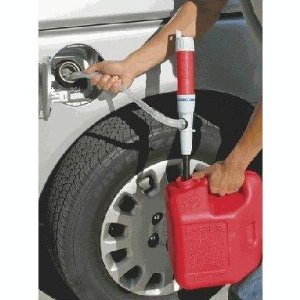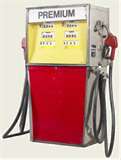Fuel Quality Problems

Sometimes although not often fuel quality problems can cause extremely hard-to-find engine drivability problems and repeat failures of fuel system components. Described below will be an effective way for you to check the basics of your fuels quality.
Keep in mind that you will need an accurate fuel sample from the vehicle you want to test. Although there are several safe ways to remove fuel from your tank I recommend that you pick up a special fuel siphon hose from your auto parts store. Or I have a link to the one pictured to the left at the bottom of the article.
You will also need a glass cylinder that is graduated in milliliters (also available below). In order to keep the testing simple it is best to use round numbers. Your graduated cylinder should hold 100 ml and have a cap to prevent tainted results. Don’t worry you do not have to be a scientist to conduct this test but you will need a gas sample and a graduated cylinder.
Why test fuel quality

Before I get into this short and sweet procedure for testing your fuel quality let’s talk about why it needs to be done sometimes. On a few occasions I have been faced with drivability problem that seemed impossible to solve that was eventually traced back to contaminated fuel.
I have also seen repeat failures of fuel pumps and related components due to excess alcohol content in the vehicle’s fuel supply. Too much alcohol in the fuel can do a lot of damage but one of the most common results is repeat fuel pump failures.
Many areas of the country use oxygenated fuel to help improve air quality. The additive that is used to oxygenate the fuel is most commonly alcohol. Chemicals such as ethanol have the same effect on the fuel system as alcohol.
If the alcohol concentration exceeds 10% by volume this can cause the engine to run lean. A lean running engine has higher combustion chamber temperatures and can increase wear to items such as spark plugs, valves and seats and the fuel system components such as pressure regulators and injector nozzles.
How to test for fuel quality
Fortunately you do not have to be a scientist to find out how much alcohol is in your fuel. Take a fuel sample from the test vehicle and fill your graduated cylinder to the 90 mL mark. Next you add 10 mL of water to the graduated cylinder to bring the total contents to 100 milliliters.
Now you snap the sealing cover over the end of your cylinder and shake the mixture thoroughly for about a minute. Then you can place to cylinder on a level surface and allow the solution to settle so that the different fluids separate. I usually wait an hour or two before I examine the cylinder.

Since water is heavier than gasoline the water will settle to the bottom of the cylinder along with the alcohol that is in the fuel. Water and petroleum products do not mix but alcohol and water will bond to each other and fall to the bottom of the cylinder.
If the fuel contains any alcohol the water level will be greater than its initial reading of 10 mL if the new watermark exceeds the 20 mL mark on the graduated cylinder that indicates a concentration of more than 10% alcohol. If there is more than 10% alcohol in your fuel it should be replaced along with your fuel filter. This will avoid any of the problems that can result from having too much alcohol in your fuel.
Note if you just want to test for water in fuel, you will need to get the fuel sample from the bottom of the tank. You can then just fill the cylinder to the 100ml mark and let it settle before observing the results.
The above method was taught to me by an automotive instructor in a General Motors training class. He provided us with one of the glass cylinders for us to take back to our shops. I don’t use it that often but when I do I find fuel quality problems about 25% of the time. For more information that might help you out of a jam you can return to see the latest posts on the auto repair information blog.

